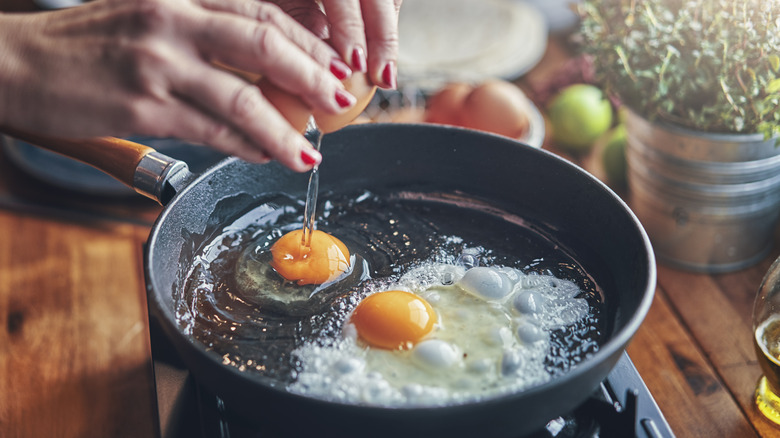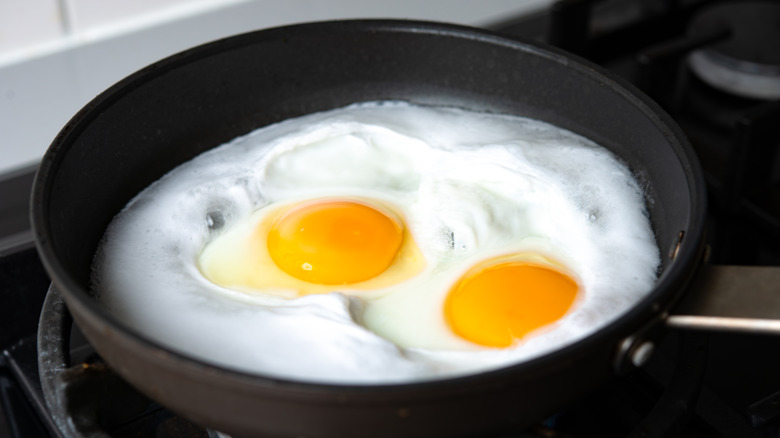Basted Eggs Are Creamy And Jammy Without Much Fuss
Basted eggs were never an option rattled off at the diner growing up like the usual suspects were — scrambled, sunny side up, over-easy, or fried. For many of us, they are a new method of cooking eggs that you'll want to incorporate into your breakfast rotation immediately — especially if you struggle with flipping fried eggs or enjoy a breakfast sandwich on the go.
Basted eggs resemble over-easy or sunnyside-up eggs on the plate, but their yolks are more set, like soft-boiled. Instead of the yolk running when cut into, a basted egg's center is custardy and jammy, which makes it ideal when preparing a bacon, egg, and cheese sandwich — no mess from the yolk dripping down your arm. The egg's soft consistency also allows you to spread it on bread, making basted eggs the perfect addition to avocado toast.
The bottom of the egg develops delicious buttery-fried edges since it's cooked by direct heat, but the top is steam-cooked, keeping it tender. Like a poached egg, water is used for cooking the whites, so this technique eliminates the need to flip and requires less cooking fat (although no one said the eggs couldn't be basted in melted butter for a truly luxurious breakfast). Since there's no need to wait for the water to boil, basted eggs can be prepared within five minutes without fussing over the pan to ensure all the slimy white parts are cooked.
How to prepare basted eggs
Like poached eggs, basted eggs have less fat than traditionally prepared fried or scrambled eggs that require a lot of oil or butter to cook. Unlike poached, simmered in boiling water, basted eggs are cracked directly into a frying pan, like sunnyside up.
To make basted eggs, heat a large nonstick frying pan over medium heat and add a nob of butter (for flavor and insurance to keep the egg from sticking). Add the cracked eggs to the frying pan when the butter has melted, allowing the whites to spread out. If many eggs are being made, ensure the frying pan is big enough and has a lid that fits. Cracking eggs into a separate bowl before adding them to the pan or any recipe is good practice. This way, you can ensure the yolk hasn't broken and remove any unwanted shell fragments before adding it to the pan.
Allow the eggs to cook for 30 to 60 seconds until the whites around the yolk set, then add a tablespoon of water for every two eggs and cover the pan with a lid. If the pan doesn't have one, place a cookie sheet on top. Raise the heat slightly to create steam, and cook the eggs for another minute or two until the whites on top of the yolk have set. Remove the lid and slide the eggs onto a plate or sandwich, and generously season with freshly cracked pepper and sea salt. Enjoy!


